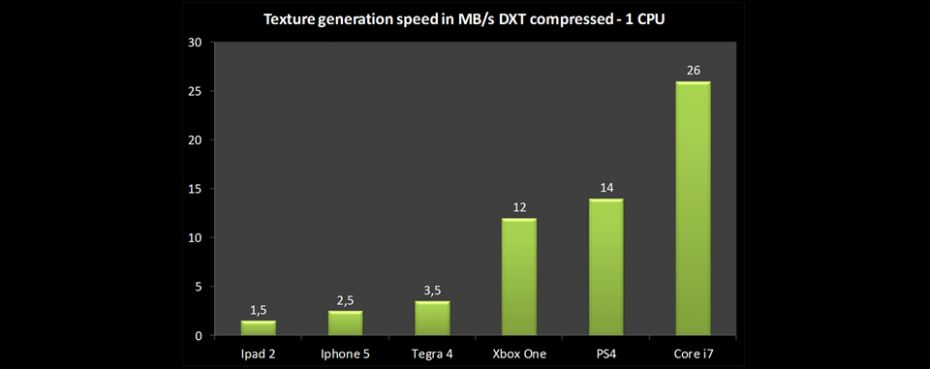I realise the onboard wasn't retail but you were talking about UFS storage instead of MicroSD I thought. That is where we can get benefit if Nintendo provides it. I don't care if the storage is internal or not so long as they provide some sort of cost efficient method of expansion. That is, I do NOT want to pay US$60 to get what I consider to be sub-standard storage (128-256GB). $10-20 maybe but given the competition and what they offer now (1TB IIRC) Nintendo need to come to the party.
I should clarify. UFS can refer to two different things. It is an embedded flash memory solution used in high end phones offering higher performance than the cheaper alternative (eMMC), however there's now also a memory card standard which uses largely the same interface and is (slightly confusingly) also called UFS. The embedded variety should probably be referred to as eUFS to reduce confusion, but that's not a term I've seen used.
Whether we're talking about internal storage or expandable storage, Nintendo still have limited options, none of which provide for vast storage capacity at low prices. They could conceivably use full-size SD cards instead of MicroSD, but from a cursory glance at prices that would only save people perhaps 10% or so.
I don't think anyone complains about the PS4 or XBO as far as I know because it's just expected that a good, solid gaming console has good storage. People need to stop giving Nintendo free passes.
Of course they're not complaining, as PS4 and XBO have mandatory installs, so they're going to use up that space whether they like it or not. Those hard-drives also contribute far less to the overall cost of the machine than a large pool of flash memory would for Switch.
I'm not giving Nintendo a free pass, I'm just recognising that it's both technologically and financially impossible for them to include 500GB+ of storage in a device like Switch, so I'm not going to expect them to do something they (a) can't do and (b) have much less need to do, due to the lack of mandatory installs.
One thing you also need to take into account is patches which can be pretty large for the big games (10+GB) and we'd also need to know how they will handle filesystem access to assets and whether asset bundles all need to be in a relative path which would me having to duplicate some or all of the cart contents to storage if you patch.
Nintendo has been handling this for years now without issue on Wii U, so I would assume they're well versed in how to minimise file duplication in patches. Patch sizes that big are both very uncommon and likely exacerbated by the same practices of using uncompressed assets as full games are.
I'll guess we'll have to wait and see but I don't necessarily think assets will be much smaller than PS4 as the Switch is meant to do similar resolutions as far as we know. I would be surprised if it was designed to be a 720p machine on a large TV in this day and age. But who knows.
Additionally when it comes to effort, developers would rather not bother if it's a headache (Unless of course Switch sells gangbusters) especially given the sales for core games on Nintendo hardware.
Given the reported 3.2GB of usable RAM vs 5-6GB, I'd expect texture resolutions to be somewhat lower on Switch versus the other consoles. And it's not as if there's enormous effort involved in converting WAV to MP3 or AAC.
The two questions I have around UFS cards are : 1) Where can you buy them as a quick google pulled up nothing for me. 2) If they're brand new I'd guess they'd be expensive no?
You can't buy them, as there aren't any devices which support them yet. If Nintendo did support them with Switch (not that I'm expecting them to), they'd potentially be the first device to do so, although the Galaxy S8 releasing around the same time will probably also support them. They're likely more expensive than MicroSD, although the prices should come down over time as more devices support them and more manufacturers start producing them.
About those cards...Good luck getting PS4/XB1 sized games on them.
If the Switch gets ports of the other console games, they would have to be massively scaled back just to fit on the physical media. Once again, that would be understandable for a mobile device, but for a console it is laughable.
Oh, and what about digital delivery, yet another expected feature of a modern home console. Either the Switch won't have it and fail yet again in the head-to-head console feature battle, or the storage limitation issue is still there as large as ever.
I feel like I should bold this, as people seem to ignore it every time it's pointed out:
Switch game cards, without question, will allow for larger storage capacity than PS4/XBO Blu-Rays
It's basic progression of solid state storage capacity. Nintendo should absolutely be able to offer publishers 64GB and 128GB game cards in 2017. I don't expect anyone to use 128GB cards, because games simply don't need it, and I don't even expect 64GB to be common. And before you start typing "but they'll be so expensive everyone will have to use 8GB cards!", a 128GB card in 2017 will be no more expensive than the 256MB card used for Archaic Sealed Heat in 2007 was or the 4GB card used in 2012 for RE: Revelations. Both of those were third party games selling for $40, by the way.
I'd also like to point out that you've literally given an example of a game bundle which
doesn't fit on a single Blu-Ray but could fit on a single Switch game card.


